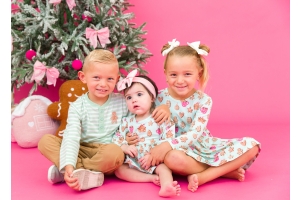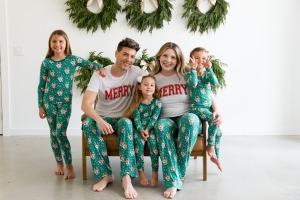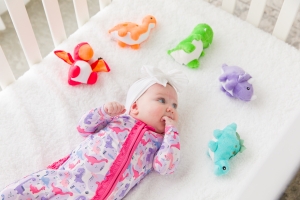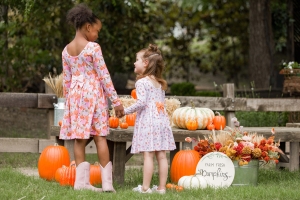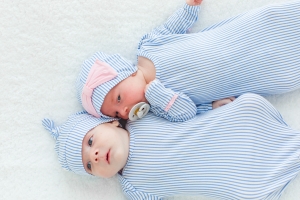How to Dress a Baby for Sleep in Summer
How to Dress Baby for Sleep in Summer
Maybe you’re the type of family that likes to sleep with all the windows open, letting a balmy summer breeze flow through your home at night. Or perhaps you’re the type of family that sets the air conditioner on full-blast and bundles under covers even on the hottest nights.
There isn’t one right way to sleep in the summer months.
While a large part of how to dress baby for sleep in summer depends on different temperatures, there are several general guidelines and rules to know, as well as tips that will make getting baby to sleep (and keeping her that way) a lot easier. So, read on if you’re trying to figure out how to dress your baby to get the best summer night’s sleep for her…and for you, too.
Summer Sleeping Choices
Before purchasing hot-weather sleeping clothes for your little cutie, it would be beneficial to think about her night environment. Some of the questions that you should consider before shopping for baby girl pajamas are:
- Do you use air conditioning? If so, what cooler temperature do you set at night?
- If you don’t use air conditioning, do you leave the windows open at night?
- Do you cool the room with a ceiling or floor fan?
- Is your baby’s room uncooled?
- What are typical night temperatures like where you live?
Once you’ve got a pretty good grasp of the different temperatures at night that your baby will encounter in the summer, you can better understand how to dress baby on summer nights and start shopping for the best summer baby essentials.
Sleeping in An Air Conditioned Room
If your baby sleeps in an air-conditioned room, you have maximum control over the ambient temperature and, thus, maximum choices in the sleepwear department for your baby. Some of the most common ways to dress a baby in summer are:
- Diaper alone
- Swaddle over diaper or onesie
- Sleep sack over diaper or onesie
- Top and bottom pajamas
- Hat and mittens
Depending on how low you set the thermostat, you might choose to combine some of these possible sleepwear options as follows:
- Below 68℉ – This is considered a cooler temperature. Maintaining an indoor temperature below 68℉ means you need to make sure your baby stays warm enough all night. A newborn baby especially struggles to thermoregulate their bodies. This means it’s your job to make sure your little one stays at a normal body temperature until she reaches about 18 months and can easily thermoregulate herself. There’s nothing wrong with choosing to let your sweet pea sleep in a cool to cold room, as long as you keep her comfortably bundled. Opt for some or all of the following:
- A sleep sac over a onesie or long fitted and footed pajamas
- A warm swaddling blanket
- Between 68℉ and 75℉ – Many experts consider this range to be the ideal room temperature for a baby. In this range, your baby won’t struggle to retain heat or maintain her normal body temperature. Nonetheless, you do need to monitor her for overheating or a chill. A good rule is that if you feel uncomfortable, your baby probably does, too. Try putting her to bed in:
- A cotton or light fleece sleep sac over a long sleeve onesie
- Footed pajamas
- Fitted two-piece pajama set with socks
- Warm swaddle over a onesie or footed pajamas
- Above 75℉ – If you keep your baby’s room above 75℉, you’ll need to dress her lightly and watch for signs of overheating in the night. You’ll also need to learn how to keep baby cool in hot weather and temperatures. Some excellent pajama choices that will keep your baby cool when the room is this warm are:
- Diaper alone or with a cover
- Diaper with a light, breathable cotton or muslin swaddle
- Breathable onesie
Sleeping in A Fan-Cooled Room
You don't need air conditioning to create a cool haven for your baby in the summer. By utilizing fans—either ceiling or floor—you can create an ideal sleeping environment. The trick with fans is to make sure your baby isn’t in the direct line of circulating air (this applies to the drafts from an air conditioner or open window as well).
As in air-conditioned rooms, the pajamas your baby wears in fan-cooled rooms will depend on the temperature range. For a cooler room try:
- A wearable sleep sack over a onesie
- Light cotton footed pajamas
- Fitted two-piece pajamas
For a warmer room try:
- Diaper and light muslin swaddle
- Breathable sleep sac over a diaper
- Short sleeve onesie
One notable difference between air-conditioned rooms and fan-cooled rooms is that air conditioning will maintain a steady temperature all night while a fan might not. It’s important that you monitor the room periodically throughout the night to make sure it isn’t getting too cold or too warm. Luckily, your hungry little peanut will likely wake you plenty for that job.
Sleeping Without Cooling The Room
In certain climates, it’s entirely possible to sleep with only an open window to cool the room (hello, California). In others (say, Florida, for instance), summer months necessitate more intense cooling. But even if you’re able to keep your baby’s room in the ideal range between 68℉ and 75℉ without a fan or air-conditioning, it’s nonetheless important to:
- Circulate Air – Keeping the air moving in your baby’s room at night is vitally important. Research has shown a correlation between warm, uncirculated air and Sudden Infant Death Syndrome (SIDS). Even just purchasing a small portable fan and positioning it in such a way that it circulates the air (without blowing directly on your baby) can help reduce the risk of SIDS.
- Check Periodically – While you may be able to snuggle into your comforter if the temperature drops or a wind rises during the night, it’s safest to put your baby to sleep without a blanket , so she doesn’t have that luxury. Instead, be mindful to check on her throughout the night, even if she’s sleeping. Similarly, if the temperature rises in her room, you’ll want to cool her down since overheating has been linked to SIDS.
- Dress Baby Correctly – Nobody wants to do a fashion show at 2 am, but if you don’t have the power to keep your baby’s room at an ideal temperature, you’ll need to adjust her sleeping gear according to the temperature changes throughout the night. Having items that are easy to layer, while still secure, will help. Consider layering and then removing the following pieces if the room grows warm:
- Diaper
- A baby girl onesie
- Kimono top
- Sleep sack
- Warm swaddle
- Be Aware of Signs of Overheating – Know the signs that might indicate that your baby is overheating, such as:
- Skin that feels hot to the touch and is red or flushed
- Abundant sweating (although some babies don’t sweat at all)
- Vomiting, fussiness, or restlessness, even after eating
- Lethargy or sluggishness when she should normally be awake
- Elevated heart rate (normal resting heart rate is between 70 and 150 bpm)
What To Do if Your Baby Shows Signs of Overheating
Whether you use air-conditioning, a fan, or nothing at all to cool your baby’s room, you should be able to respond quickly with the following steps if you think your baby is overheated:
- Check Baby’s Temperature – Locating and properly using a functional, accurate thermometer (even in the middle of the night) is an essential parenting skill. Your baby’s ideal temperature should be below 100.4℉.
- Reduce Layers – Strip your baby down to just a diaper if it seems like she’s overheated.
- Move Baby – If your baby’s room is causing her to overheat, she should be moved to a cooler room.
- Bathe – Give your baby a lukewarm bath or a cool wipe down with a washcloth to help lower her body temperature.
- Hydrate – An extra serving of formula or breastfeeding should help keep the baby hydrated during the night.
Other Tips for Good Summertime Sleep
Aside from keeping your baby comfortable, she’ll sleep better if her little body stays in a normal temperature range. And good sleep for your baby means good sleep for you, too. It’s a win-win.
To make the most of your summer nights, here are a few tips:
- Form good sleep habits early, such as winding down with a book or bath
- Watch for signs of sleepiness and respond immediately with a bedtime routine
- Use room-darkening curtains, especially when the days are long and bright
- Use a secure crib with a breathable, tight cotton sheet
- Never place pillows, loose blankets, or bumpers in your baby’s crib
- Keep nighttime diaper changes and feedings calm, quiet, and low-lit
- If your baby seems warm in the night, reduce her layers and give her a little cool sponge bath
Sleep Tight with RuffleButts
Whether your baby’s bedroom is cool and air-conditioned or balmy and breezy, you can help her get good summertime sleep by dressing her appropriately.
At RuffleButts, we’re passionate about creating the best quality sleepwear on the market. From our adorable ruffled baby girl onesies to our darling printed footed baby girl pajamas, RuffleButts are always silky soft, and constructed with high-quality details, like tagless labels, 2-way zippers, mitts on 0-3 month pajamas, and elasticized ankles.
Take a look at our selection of baby girl sleepwear and infant pajamas and see why our customers rave about RuffleButts for all seasons of sleep!
Sources:
Children’s Hospital of Philadelphia. Warmth and Temperature Regulation. https://www.chop.edu/conditions-diseases/warmth-and-temperature-regulation#:~:text=Even%20full%2Dterm%20and%20healthy,can%20increase%20by%2010%20percent.
WebMD. What’s the Right Room Temperature for a Baby? https://www.webmd.com/baby/what-is-the-right-room-temperature-for-a-baby
Epidemiology. Ambient Temperature and Sudden Infant Death Syndrome in the United States. https://www.ncbi.nlm.nih.gov/labs/pmc/articles/PMC5552234/




